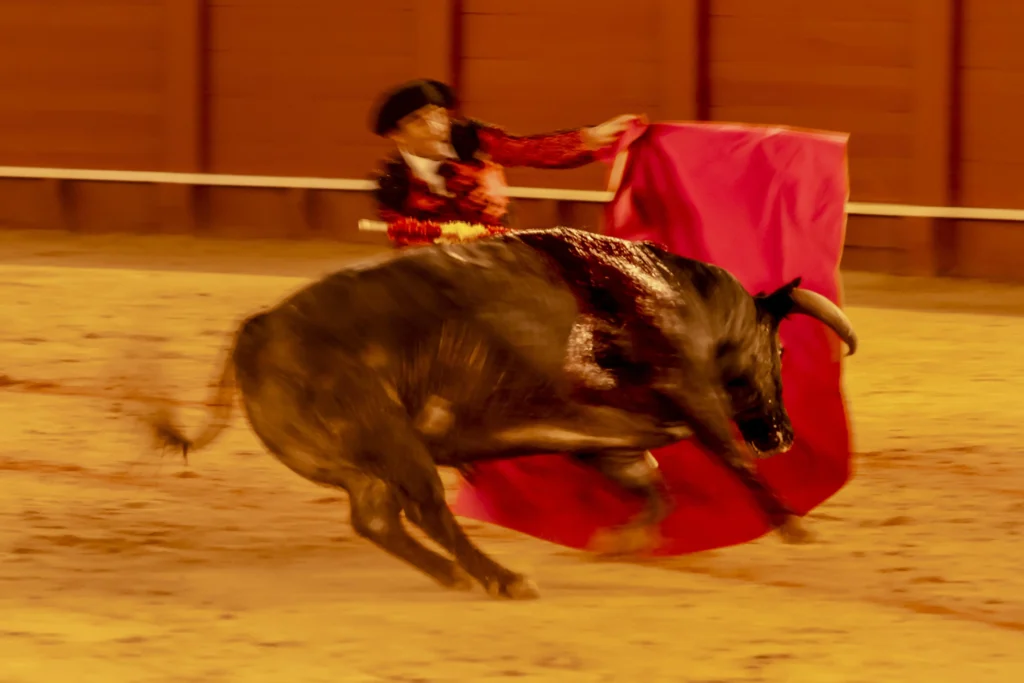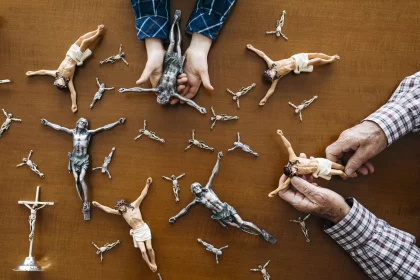We all are violent

Violence is ubiquitous, and in every human being. Even in my point of view.
At the essence of the human experience, there are many types of violence. There isn’t just one definition nor one delicate synonym. Brutality, pressure, enforcement – violence offers many masks. However, the most common term violentia (lat.) represents the act on both sides, physical and psychological.
Violence has always been read and inflicted in/on the “body”, both on an abstract and corporeal level. If violence is referring back to the original meaning, it includes “vehemence, impetuosity” in very specific shapes. First, there is the value of the body as a matter. A very holy object. A spiritual, worldly being, a metaphorical representation. Yet, apart from a few examples, there’s no evidence if violence in arts or different media (movies or other platforms) has a traceable influence on the audiences‘ minds. It’s even more difficult to pinpoint the relationship between violence and the individual nerve system, or how this might have come to shape art and art history.
The act itself doesn’t necessarily have to be associated with blood, murder and visible effects. Symbolic violence, for instance, is a term sculpted by Pierre Bourdieu, a prominent 20th century French sociologist. Bourdieu describes it as a form of non-physical matter manifested in the power imbalance between social groups. By removing the victim’s force and voice, it becomes abstract and indirect. While basically invisible, it simultaneously legitimizes and sustains other forms of violence which are noticeable. Symbolic violence can be set within different domains such as ethnic identity, gender, sexual orientation or nationality.
Violence in each of us is „reproduction“
Space and time on this planet intertwine birth, life and death. Three inevitably connected cases. As the final conclusion of every life is death and because death is an unknown condition, the unknown is “mind violence” with no clear answers. An unbearable state of mind that induces a nightmare for some people.
In my own perspective, violence can act as a purge mechanism for the prevailing values. Even fake ones. Idealism und civilization aside – evolution still plays its trick on us. Nature depletes, there’s no way around it. People die in wars or due to lack of basic, contested resources on the other side of our first world society. Violence is in every human, we reproduce it. For thousands of centuries, it allowed us to demonstrate power and strength and thus, exist to reproduce.
Cultural traditions contain a lot of violence
Let’s talk about bullfighting, the physical contest that involves humans and animals attempting to publicly subdue, immobilize or kill a bull, usually according to a set of rules, guidelines or cultural expectations. These actions became normal behaviour. The roots of Spanish bullfighting derive not only from traditions but from religious concepts as well. For it’s a ceremony of death, a kind of theatre that gives rise to our fear of violence and the concept of nihilism. Just as humans once were, it’s now the bull that is sacrificed in order to pacify our fear of death.
But violence can also be padded with a creative and shining appearance, as salvation for the perpetuation of human life and civilization. In classical arts as in new media, violence has long since become an ordinary and familiar trend. After all, people are being dismembered, blown up or otherwise annihilated with numbing regularity. Social scientists have long discussed the effects of such artistic representations of violence upon audiences. With very different, even contradictory outcomes.
Violence in art – means to an end and looked for
But what’s really interesting is to see how artists and writers do deal with the visible or hidden ones of our violent impulses. Either during the renaissance art or from late mannerism to baroque: violent symbols and behaviours exist just about everywhere.
Let’s look at the Italian painter, Michelangelo Merisi da Caravaggio, for example. Caravaggio was part of the Italian Baroque (approx. 1600-1760/70). He grew out of the Mannerist era (1520-1600) into this sphere. His styles were not that different from the Italian Renaissance paintings. The colour palette was rich, full of the deep dark. At that time, the theme “religion” was more common. And, certainly, the paintings were carrying a lot of violence, not only in symbols.
Caravaggio himself represents the colourful temperaments of artistic people and sometimes acted out as a „violent street fighter“, yet intelligent painter. For he applied various, extreme modes and shades of the so called chiaroscuro (light and dark-technique) to his artworks. Just think of the famous scene “Judith Beheading Holofernes” (1598/99). It is widely believed to have been painted by the Italian master.
A fundamental element of theatre
All in all, I believe it’s a naive idea to think that violence in arts should be prevented, as though such bans would prevent humans from behaving violently. Nowadays, most theatrical, cinematical and artistic traditions no longer require an actual sacrifice of humans or beasts, like in ancient entertainment. But sweeping (violent) death is and always has been a fundamental element of theatre – from Greek tragedies to Shakespeare’s dramas to Quentin Tarantino, from Hollywood’s horror to Hong Kong’s dreadful movies. These displays of something very old are just being shaped into a contemporary frameworks.
We act based on our hidden fears, and sometimes we try to watch others acting out our deepest anxieties in their own ways. Through art and movies, we still can experience the violence that we can’t carry out in real life because it’s immoral and against social values. Some, though, will resolve the inner struggle by replacing it with some kind of symbolic violence, the unreal violence, so that one can go home feeling relaesed, even feeling better about being alive.

